Learn Your “ABC’s” With Sanctuary Wildlife
By Rachel Roday
April 2024
The National Marine Sanctuary System is home to thousands of species, from tiny plankton to massive fin whales. Some species are only found in national marine sanctuaries, and others are threatened or endangered throughout their ranges. Conserving important habitat for these species maintains marine biodiversity, keeps ecosystems healthy, and helps ensure a healthy Blue Economy and sustainable recreational opportunities for local communities.
Take a look at 26 sanctuary critters — from A to Z — that call national marine sanctuaries home!
A is for American Crocodile
(Crocodylus acutus)
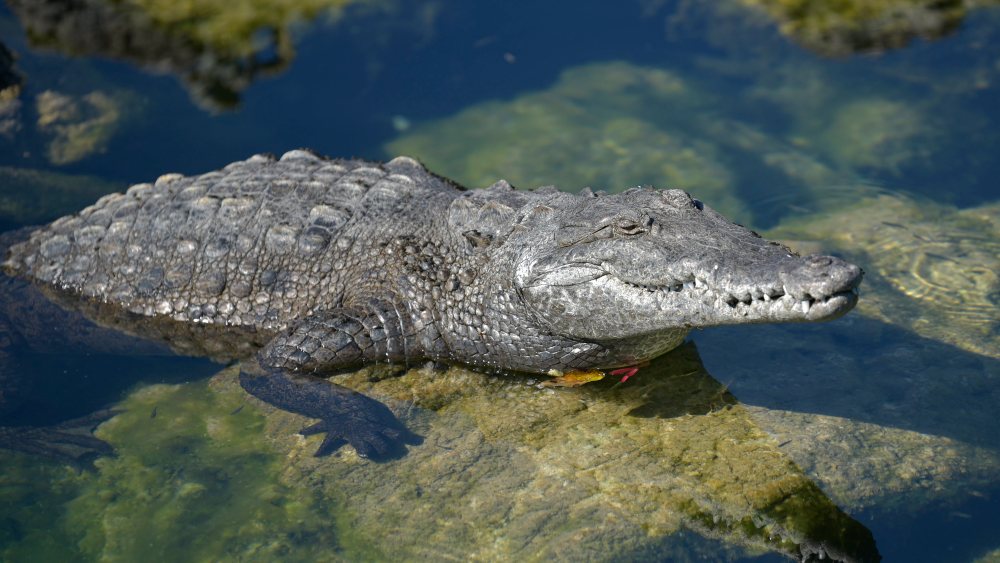
Not to be confused with American alligators, the American crocodile is only found in South Florida within the United States. Of all 23 crocodilian species, only these two are native to U.S. waters. The American crocodile has a lifespan of up to 70 years, but survival is threatened by habitat loss, pollution, and other human interference, landing it on the Endangered Species Act list as a threatened species.
B is for Bald Eagle
(Haliaeetus leucocephalus)
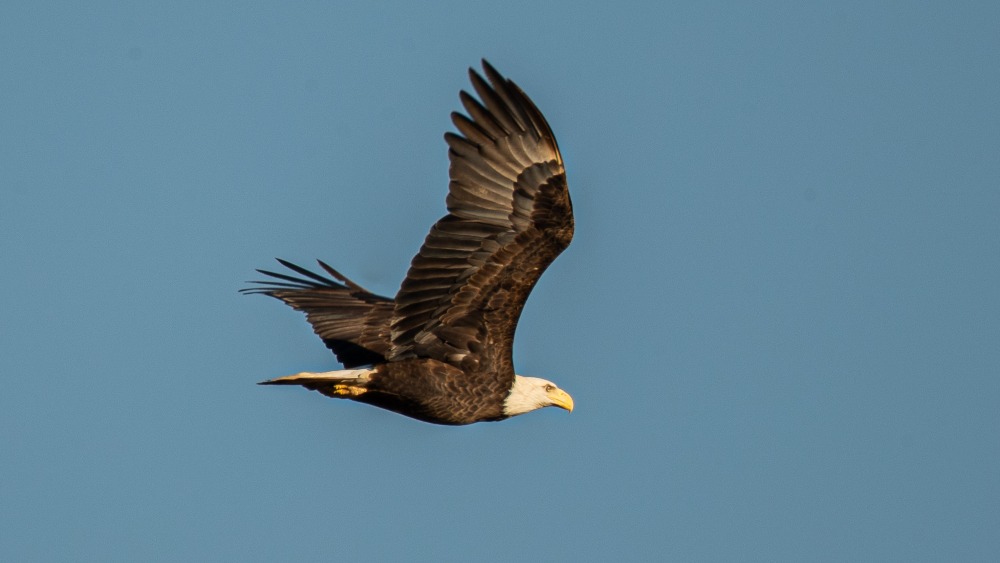
In Mallows Bay-Potomac River National Marine Sanctuary, you can spot bald eagles in the sky or perched on one of the many wooden steamships of the Ghost Fleet. Despite being known for their white heads, juvenile bald eagles actually have darker heads until they are about five years old. Grab your binoculars and camera, review our responsible viewing guidelines, and head out at dawn or dusk when they are most active for your best chance to view these majestic raptors.
C is for Cauliflower Coral
(Pocillopora meandrina)
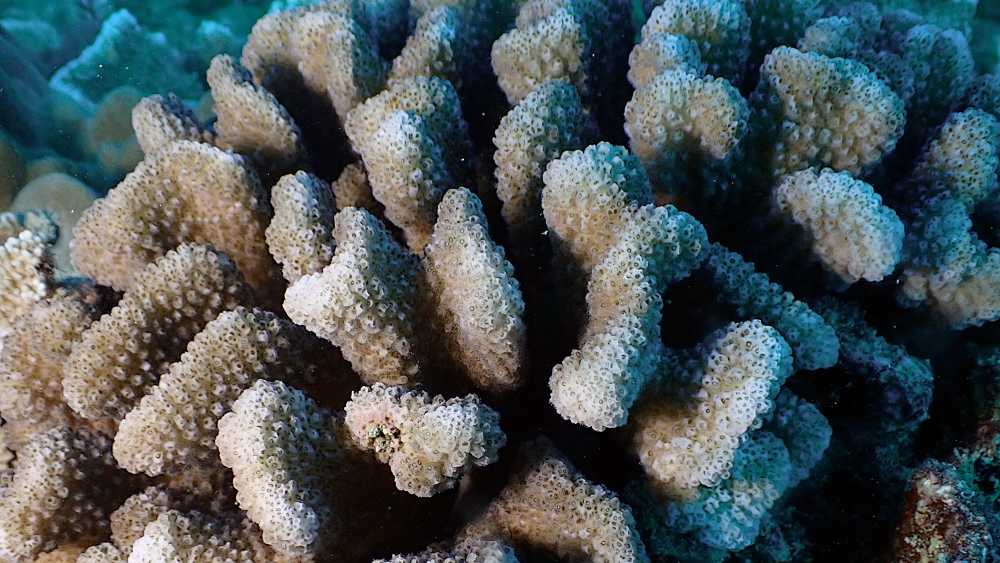
Is it a plant or an animal? Corals are animals! They often rely on a type of photosynthesizing algae (also not a plant!) to produce essential nutrients, which coral then use for 90% of their energy needs. However, coral polyps also use their tiny tentacles to feed on planktonic prey. Cauliflower corals in the genus Pocillopora are found in the Indo-Pacific and provide critical habitat for fish and invertebrates.
D is for Diamondback Terrapin
(Malachlemys terrapin)
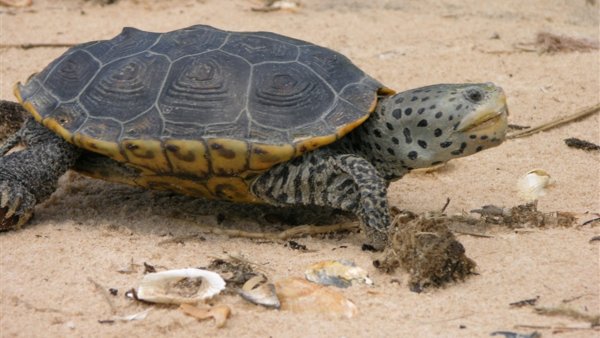
Did you know that all terrapins and land-dwelling tortoises are types of turtles? They all belong to the order Testudines — further branching into 13 distinct families. The diamondback terrapin is unique because it can tolerate a wide range of salinities, which is rare for most aquatic turtles. These terrapins are typically found in brackish water near coastal tidal marshes along the East and Gulf Coasts. Look out for characteristic spotting on their skin to tell them apart from other small turtles.
E is for Eelgrass
(Zostera marina)
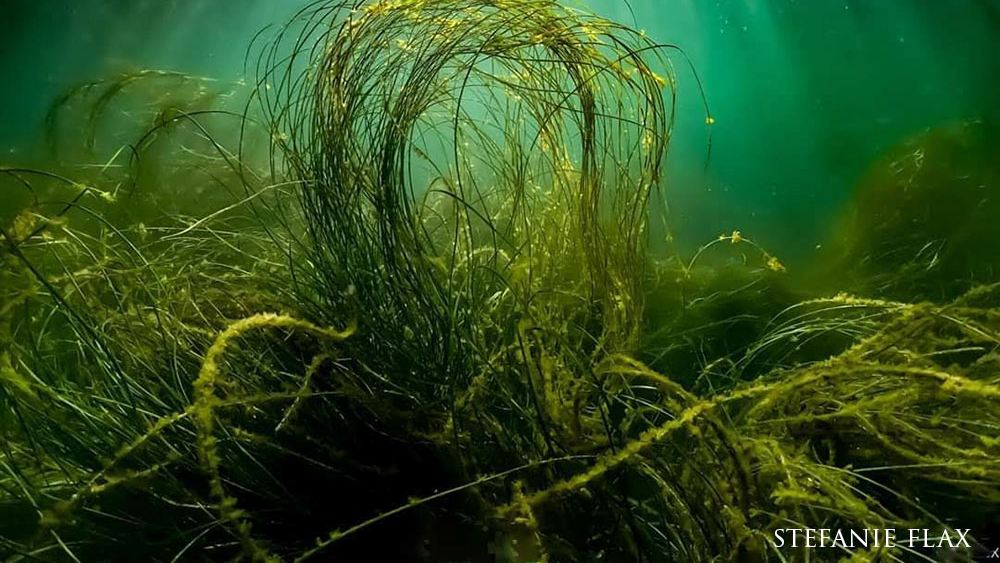
Eelgrass is a type of submerged aquatic vegetation that is commonly found in shallow coastal waters, forming a vital underwater habitat for marine life. Meadows of eelgrass help stabilize sediment, mitigate erosion, and enhance water quality. However, eelgrass is impacted by coastal development, pollution, and climate change. Conservation efforts are urgently needed to protect eelgrass populations from these threats.
F is for Fin Whale
(Balaenoptera physalus)
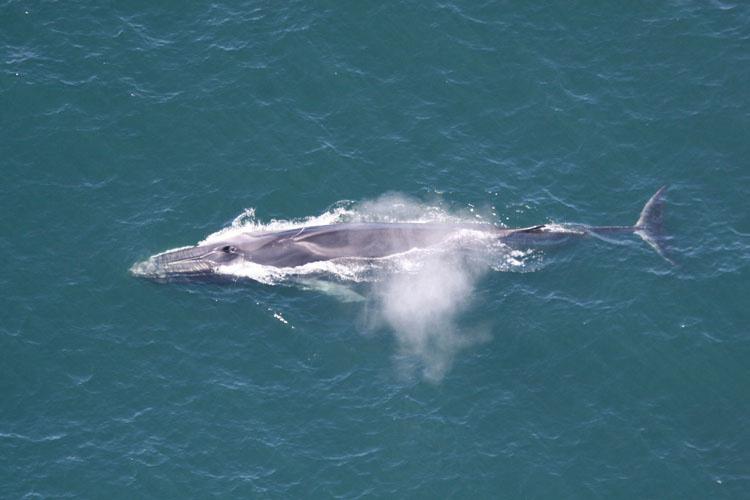
Blue whales might have all the glory, but fin whales are the second-largest animal on the planet, living or extinct. Reaching a whopping 75 feet, fin whales can weigh more than 40 tons and reach swimming speeds of 25 miles per hour. Currently, the major threat to this species comes from vessel strikes. The fin whale is listed as endangered under the Endangered Species Act and depleted under the Marine Mammal Protection Act.
G is for Gray Triggerfish
(Balistes capriscus)
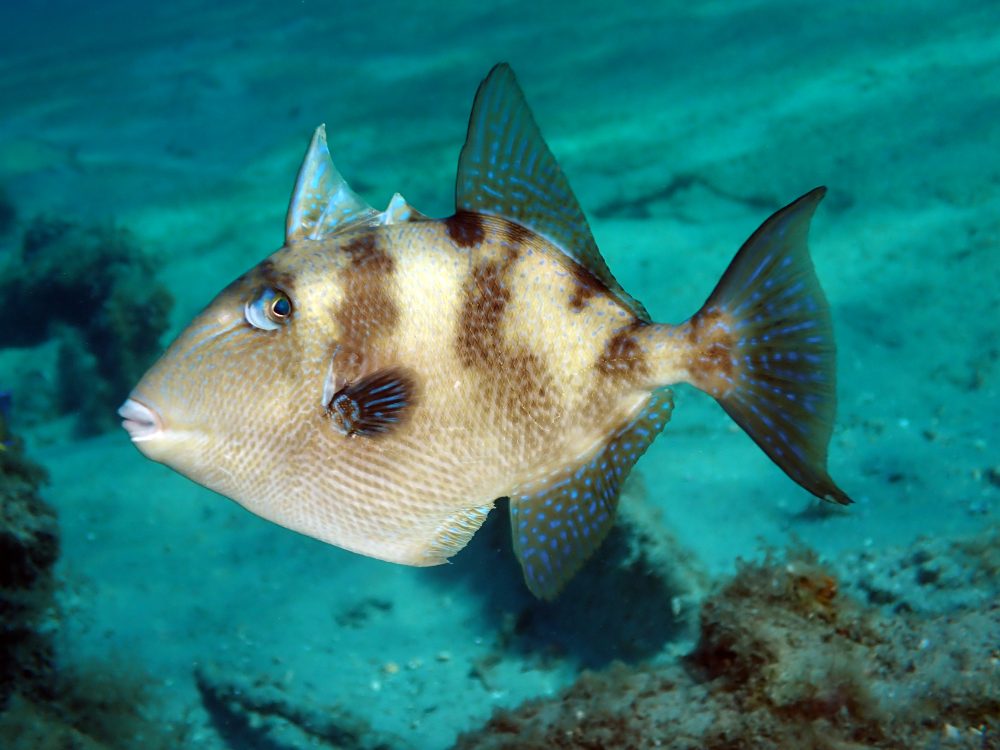
Gray triggerfish, as the name suggests, are a gray-bodied fish with blue lines and spots, that use a ‘trigger’ mechanism for self defense. The ‘trigger’ mechanism is an erectable dorsal spine that ‘locks’ into place and helps deter predators. The gray triggerfish is found in the Gulf of Mexico and South Atlantic Ocean, but triggerfish in general are found worldwide. They are incredibly territorial fish and have a habit of following divers around or becoming aggressive. If you ever come across a gray triggerfish in the wild, make sure to stay away from their nests and to not make any startling movements.
H is for Horn Shark
(Heterodontus francisci)
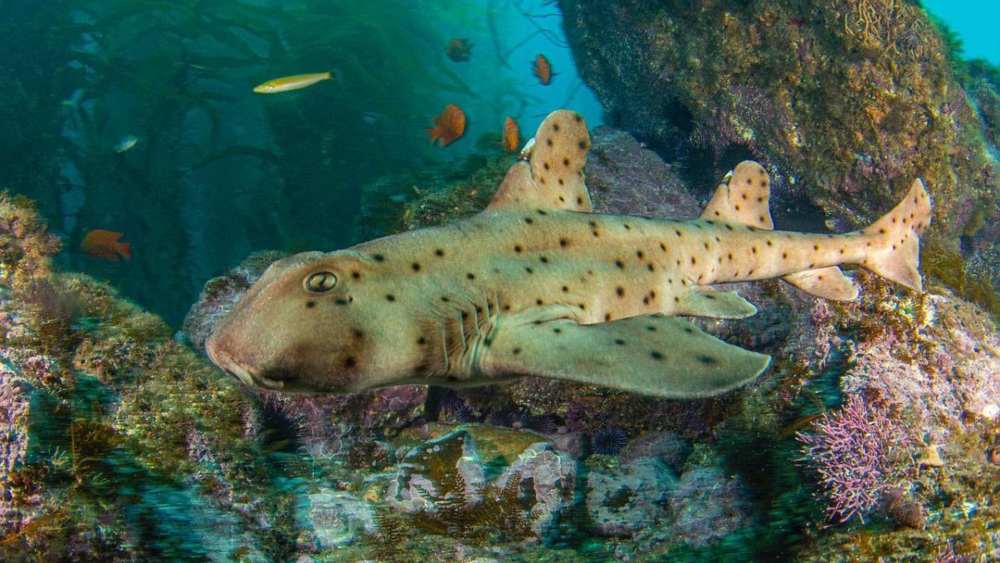
Horn sharks are appropriately named for the horn-like spines in front of their dorsal fins. These sharks are bottom dwellers and feed on crustaceans, small fish, and mollusks, using their jaws to crush hard-shelled prey. Found along the Pacific Coast of North America, such as Channel Islands National Marine Sanctuary, these sharks prefer warmer waters near rocky reef habitats. These sharks stay pretty small, and reach lengths about 4 feet and weigh only 20 pounds when fully grown.
I is for 'īlio holo i ka uaua (Hawaiian monk seal; Neomonachus schauinslandi)
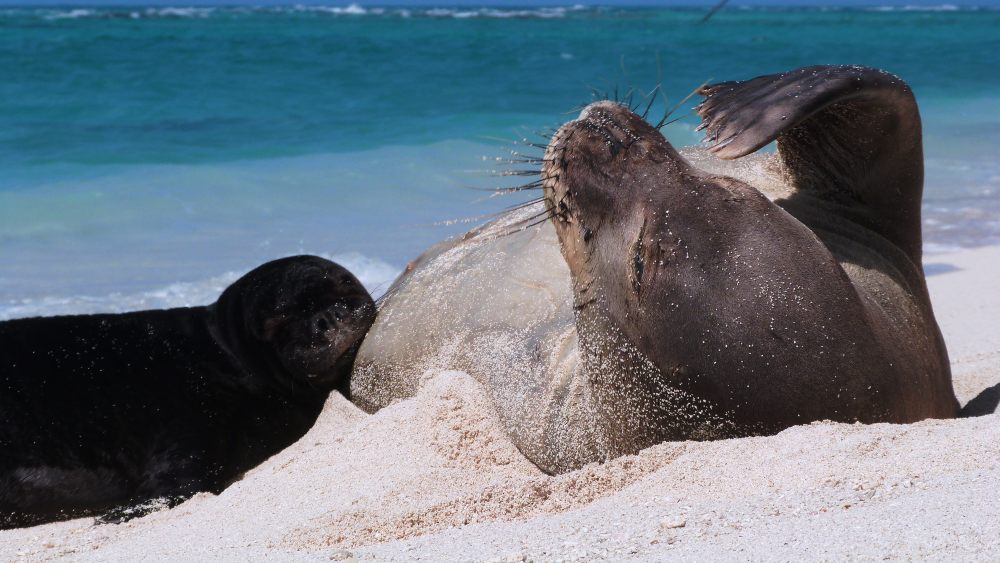
The Hawaiian Islands are home to the endemic and endangered Hawaiian monk seal, called 'īlio holo i ka uaua in ʻŌlelo Hawaiʻi (Hawaiian language). Despite conservation efforts such as habitat protection and population monitoring, the population continues to face threats such as habitat loss, entanglement in marine debris, and predation. Current estimates suggest that the population is roughly 1,600 seals. Check out this video on Hawaiian monk seals!
J is for Jack-Knifefish
(Eques lanceolatus)
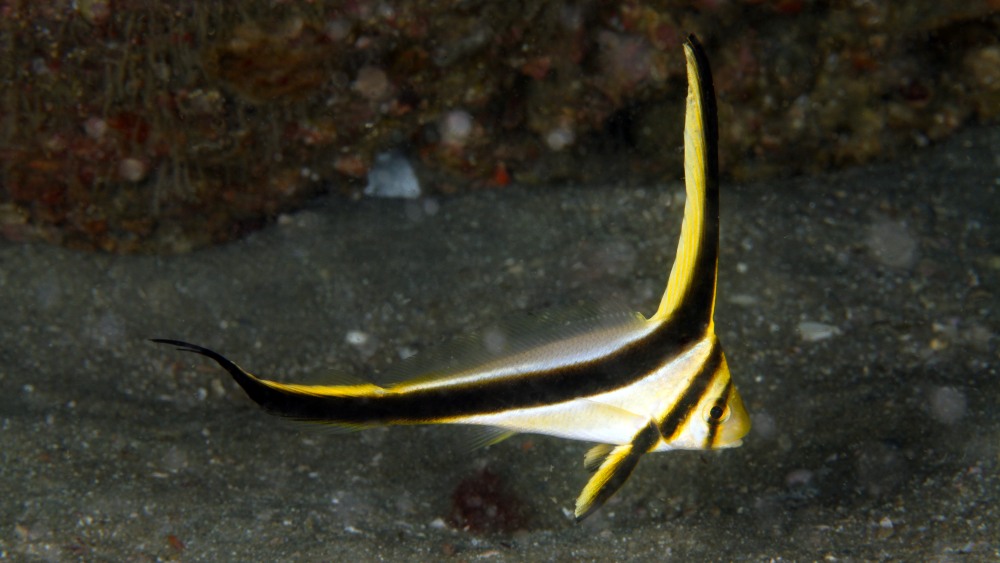
The jack-knifefish is part of the same family as drums and croakers, and can similarly make ‘drumming’ or ‘croaking’ sounds. These beautiful reef fish typically inhabit coastal reefs, and adults will feed on small fish, crustaceans, mollusks, and plankton. The jack-knifefish has signature black and white stripes and an elongated dorsal fin.
K is for Kemp’s Ridley Sea Turtle
(Lepidochelys kempii)
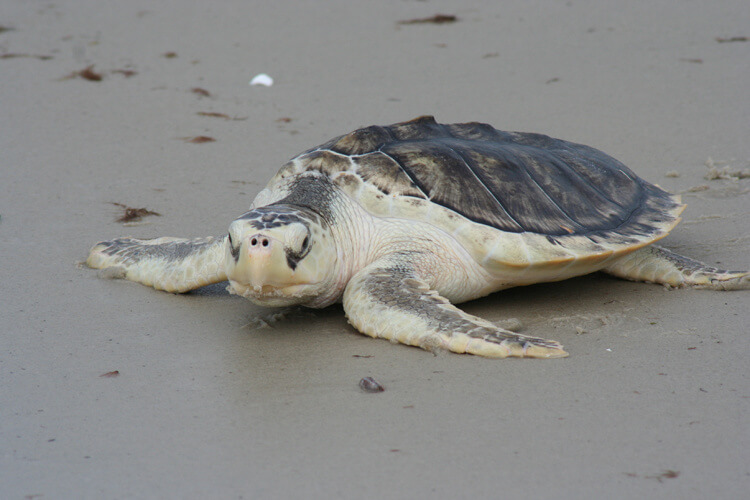
The Kemp's Ridley sea turtle is the smallest of all sea turtles. Key West's Richard Moore Kemp (1825–1908) was the first to identify the namesake species. It is also the rarest and most endangered turtle in the world, and its only major nesting beach is an area called Rancho Nuevo on Mexico's Gulf coast.
L is for Lake Trout
(Salvelinus namaycush)
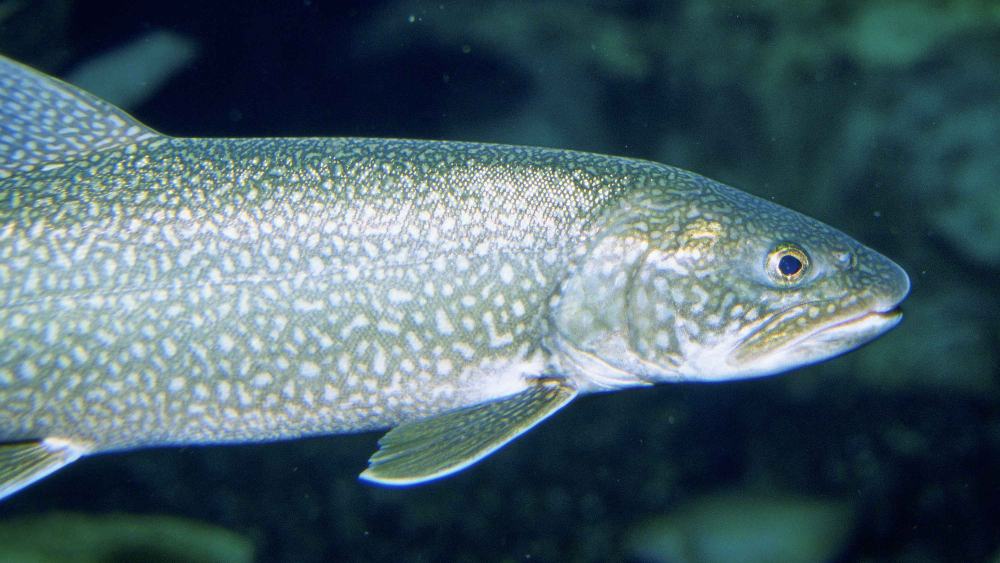
Lake trout are a deep-dwelling cold-water species of freshwater fish, commonly found around shipwrecks in Thunder Bay National Marine Sanctuary at depths greater than 50 feet. Renowned for their large size and delicious taste, lake trout are highly prized by anglers and support a very large recreational fishery on the Great Lakes. They often reach ages past 25 years and have even been reported up to 70 years old in some Canadian lakes.
M is for Masked Angelfish
(Genicanthus personatus)
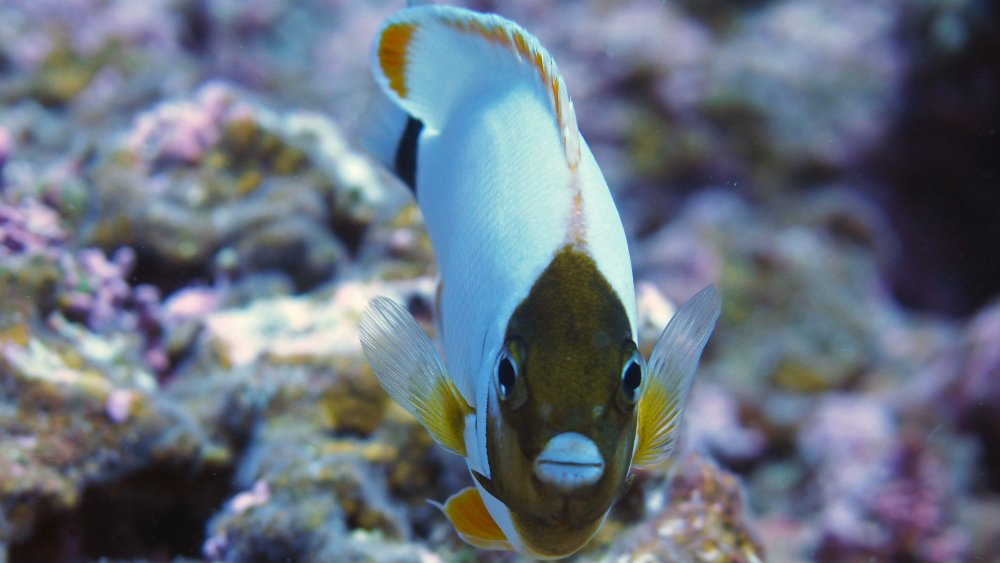
Odd Halloween costume choice, but go off. The masked angelfish, found in the Indo-Pacific, is named for its facial markings, which resemble a ski mask. This tropical fish inhabits coral reefs and plays an important role in controlling algae and maintaining reef health.
N is for North Atlantic Right Whale
(Eubalaena glacialis)
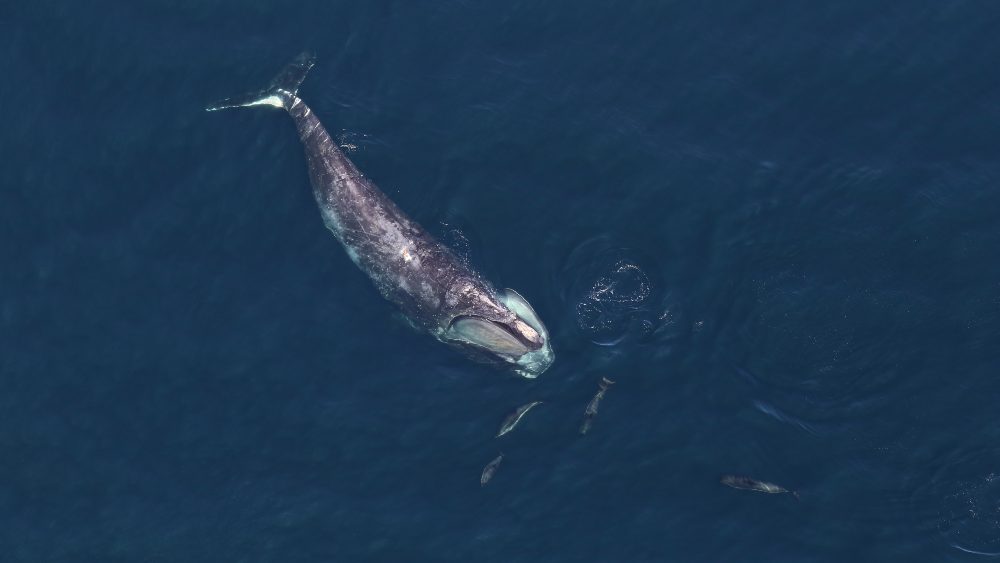
The North Atlantic right whale is one of the most endangered whale species, with fewer than 360 individuals remaining. By the early 1890s, commercial whalers had hunted North Atlantic right whales to the brink of extinction. While whaling is no longer a threat and right whales have federal protections, they never recovered to their pre-whaling numbers. Today, vessel strikes and entanglement from fishing gear are the leading causes of mortality. To better protect right whales from these threats, researchers need to be able to predict their movements. A team of scientists at Stellwagen Bank National Marine Sanctuary are trying a new approach — they’re following the scent trail of a smelly gas the whales may be using to locate their favorite food!
O is for Osedax Worm
(Osedax spp.)
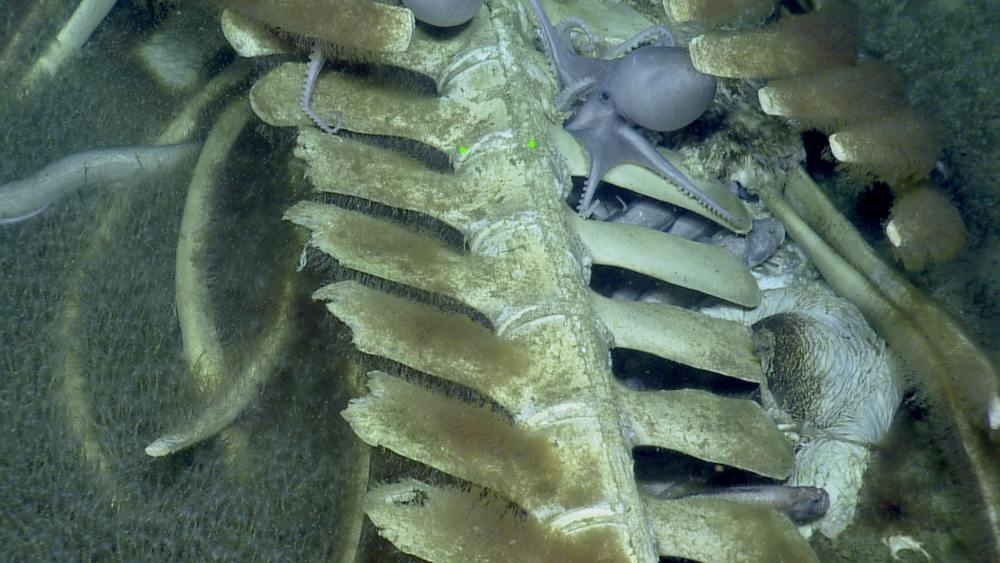
When a whale dies at sea, its body often sinks to the seafloor. There, its carcass becomes what is known as a whale fall, providing food for many different deep-sea animals. One group of animals are the bone-eating worms in the genus Osedax, which are translucent pink in color. Osedax worms can form a thick blanket over the bones of a dead whale where they will secrete an acid to dissolve the bones and work with symbiotic bacteria to digest it.
P is for Piping Plover
(Charadrius melodus)
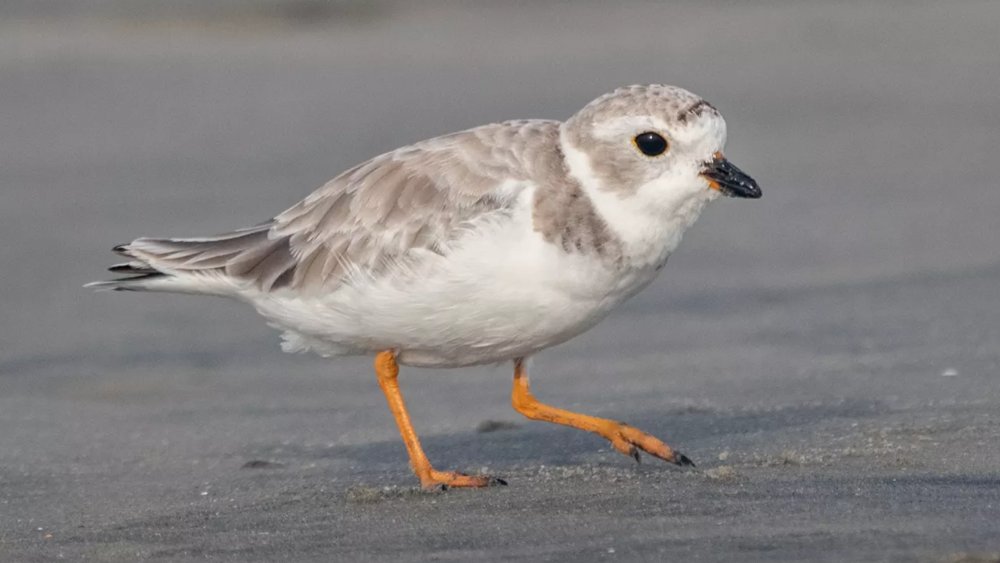
Piping plovers are highly migratory shorebirds that exhibit three distinct population segments, but all use the Gulf Coast as a stopover site during their migrations. The three separate piping plover breeding populations with distinct genetic and geographic characteristics are the Great Plains, the Atlantic Coast, and the Great Lakes. Major disturbances such as habitat destruction and modification threaten these shorebirds and their survival. They use sandy beaches, adjacent salt marshes, and intertidal sand flats to forage for marine invertebrates like worms, fly larvae, beetles, and crustaceans.
Q is for Queen Conch
(Aliger gigas)
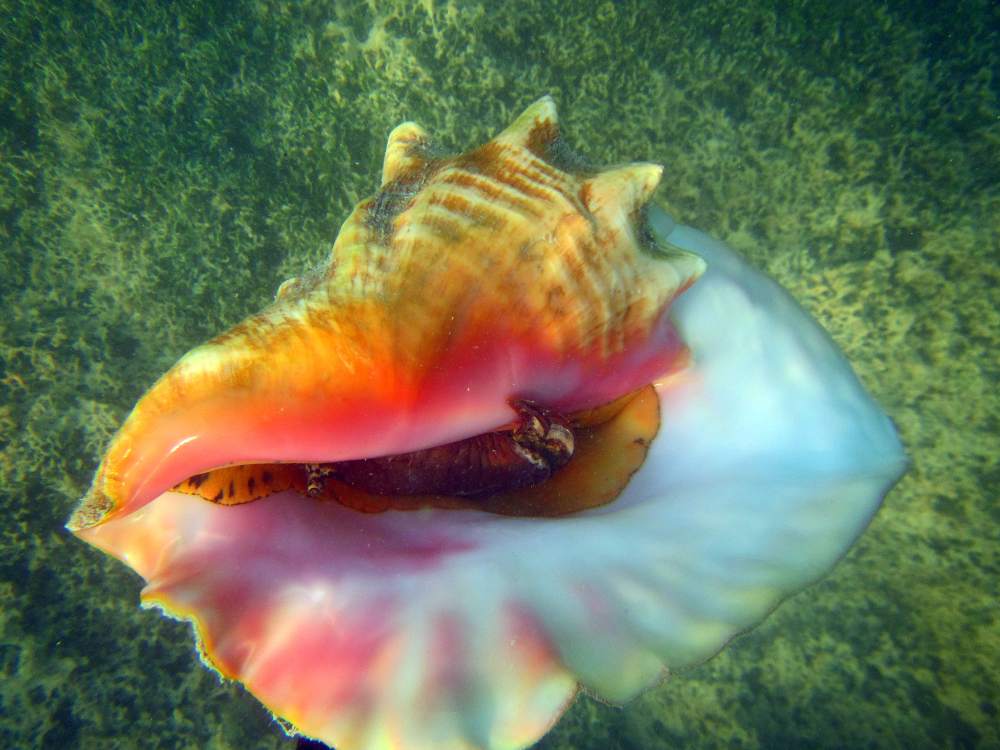
Slay queen! The queen conch is a massive type of marine gastropod (snail), weighing up to five pounds and living an average of 25 to 30 years. Queen conches occur throughout the Caribbean Sea, Florida, the Gulf of Mexico, and around Bermuda. Queen conches are herbivores, consuming a diet of primarily seagrasses and algae. They have historically been sought after for their meat and decorative whorl-shaped shells, and were recently listed as a threatened species under the Endangered Species Act.
R is for Rhinoceros Auklet
(Cerorhinca monocerata)

Aptly named for the horn-like projection on the bills of the males of this species, the rhinoceros auklet is not a mammal of the grasslands, but rather, is a charismatic seabird native to the North Pacific. This unmistakable seabird also has incredible deep-diving abilities and can plunge underwater to depths over 187 feet (57 meters) in search of prey, such as fish, krill, and squid. The rhinoceros auklet uses Greater Farallones National Marine Sanctuary as foraging and breeding grounds.
S is for Southern Sea Otter
(Enhydra lutris)
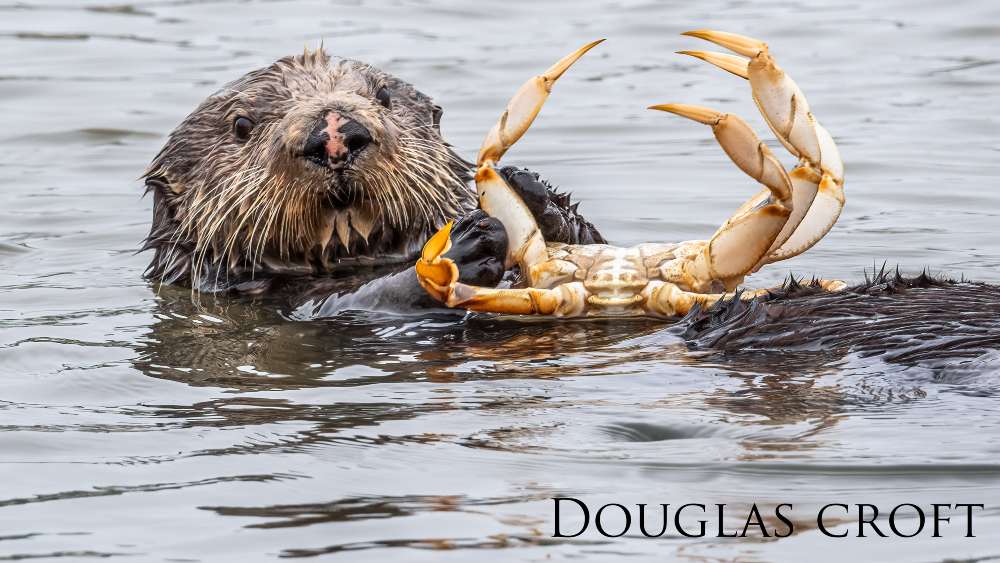
How otter-ly adorable! Southern sea otters are known for their charming and endearing behavior, as well as their use of rocks to crack open shellfish. They often hold hands while they sleep and form rafts to avoid drifting apart in the ocean currents. They have the densest fur of any mammal, which provides insulation and helps repel water. These fluff balls are just too cute and can be seen in a few different national marine sanctuaries along the West Coast.
T: Touch-Me-Not Sponge
(Neofibularia nolitangere)
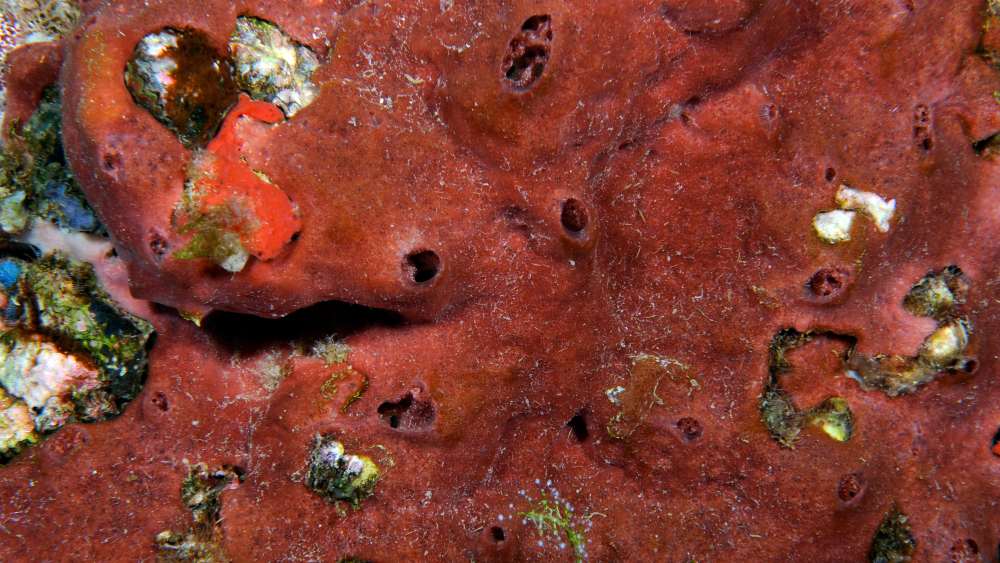
Like the name suggests, this species of sponge is not to be trifled with. Human skin contact with the touch-me-not sponge typically results in a rash, swelling, and pain. This sponge has so far been found in the western Atlantic Ocean, Caribbean Sea, and Gulf of Mexico. The touch-me-not-sponge often has a velvety texture (but remember, don’t touch!) and is brown or red in color. Depending on location and depth, it comes in a variety of shapes and sizes, from encrusting to large masses or vases.
U is for Ulva spp.
(Sea Lettuce)
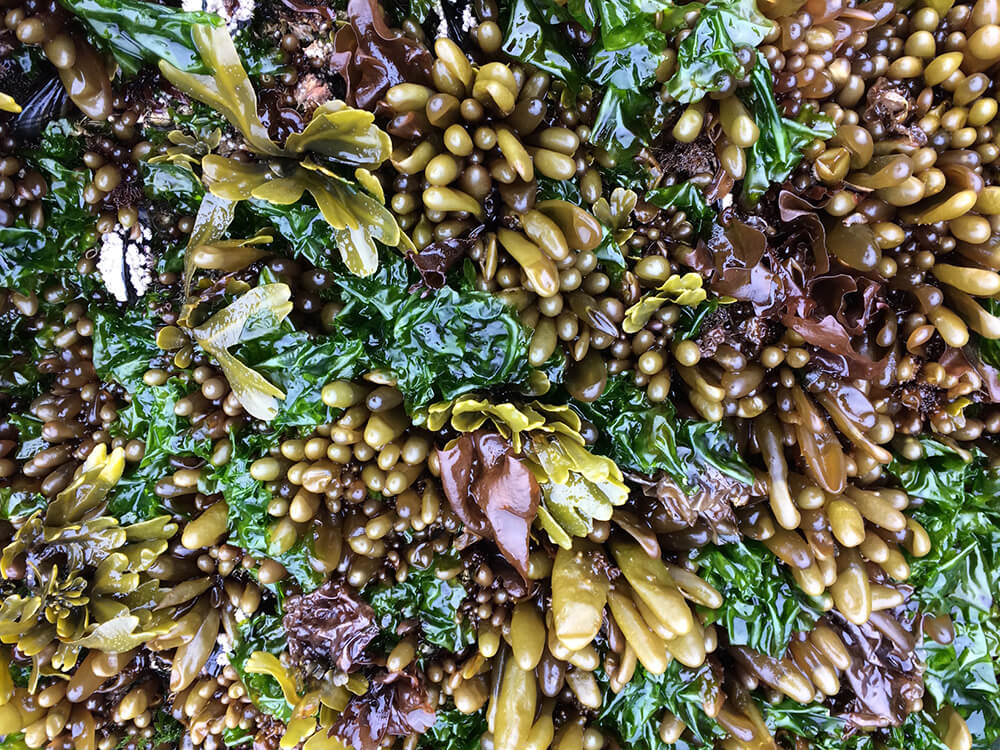
Yes, you can eat sea lettuce! The Ulva genus contains dozens of types of algae that dominate rocky intertidal zones of coastal oceans. Characterized by its leaf-like and translucent structure, sea lettuce serves as habitat for many marine species. Different types of sea lettuce are found in many national marine sanctuaries across the U.S., and new species are still being discovered.
V is for Venus Flytrap Sea Anemone
(Actinoscyphia aurelia)
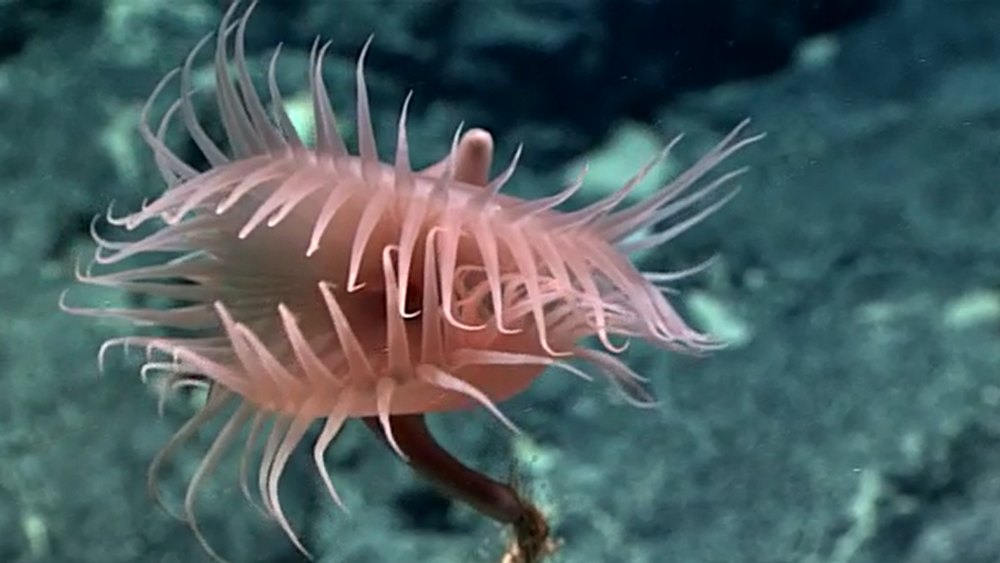
This animal looks exactly how you would imagine. Like the plant from which they get their name, Venus flytrap anemones trap unwitting prey. The anemone’s tentacles contain stinging cells that inject venom and can close to keep prey from escaping. Such prey can include small fishes and crustaceans. This Venus flytrap anemone was found perched on top of a dead Iridogorgia coral in National Marine Sanctuary of American Samoa in 2017 during a NOAA Ship Okeanos Explorer expedition.
W is for West Indian Manatee
(Trichechus manatus)

The West Indian manatee is a type of sea cow (sirenian) that prefers shallow, tropical waters. There are two distinct subspecies: the Florida manatee, located in the United States, and the Antillean manatee, located in the Caribbean. Because manatees tend to hang near the shoreline, munching pounds of seagrass and surfacing to breathe air, boat strikes have long been a threat to their population. This federally-protected species needs your help. Keep an eye out for manatees while boating and follow posted speed limits. Report injured, orphaned, entangled, distressed, or dead manatees to FWC.
X is for Xantus’ Swimming Crab
(Portunus xantusii)
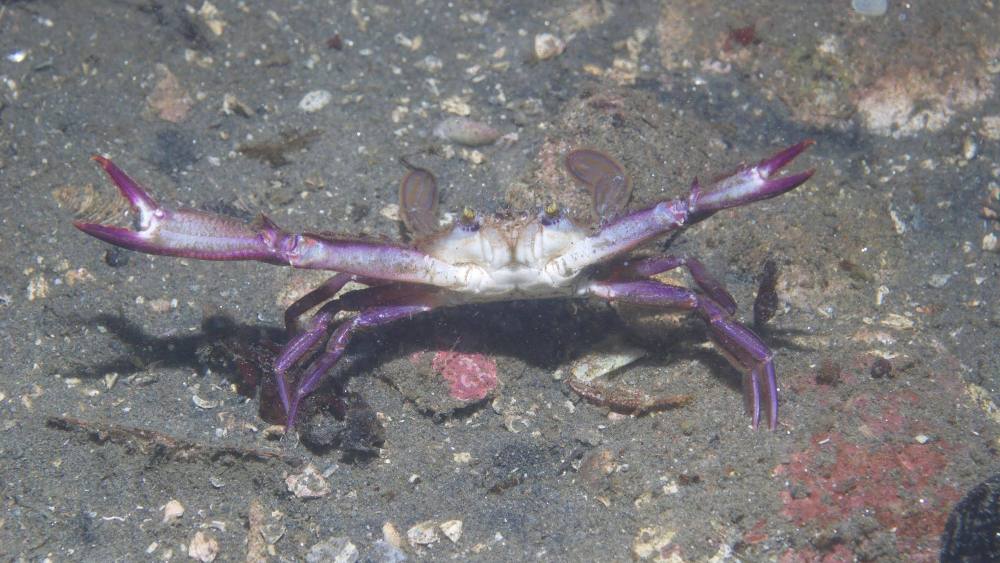
Feeling crabby? Cheer up! At least you’re not the Xantus’ swimming crab getting lost during a heatwave. This subtropical crab species was seen in Monterey Bay in 2016, north of its normal habitat range. More typical of Southern California and Mexico, this crab is strikingly different from native crabs, and lives primarily in sandy or muddy habitats, such as eelgrass beds and mudflats.
Y is for Yellowtail Rockfish
(Sebastes flavidus)
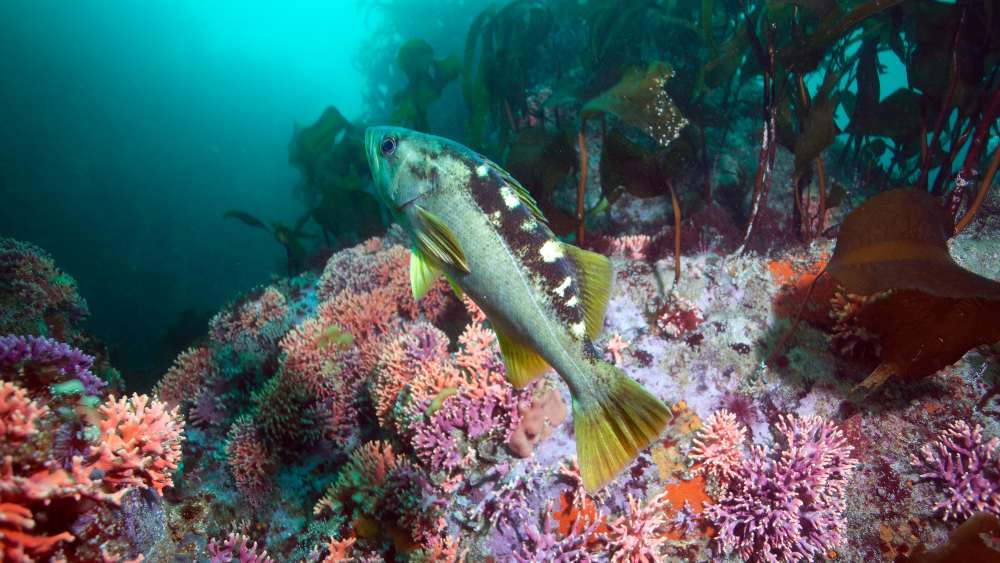
The West Coast is home to an impressive array of rockfish, often orange, red, yellow, and brown in color. The yellowtail rockfish is among them! They can live up to 50 years and are only a couple of feet in length. Yellowtail rockfish fertilize their eggs internally, and the females give birth to live young. The scientific term for this type of fertilization is “viviparous”, which literally means “giving live birth”.
Z is for Zooplankton
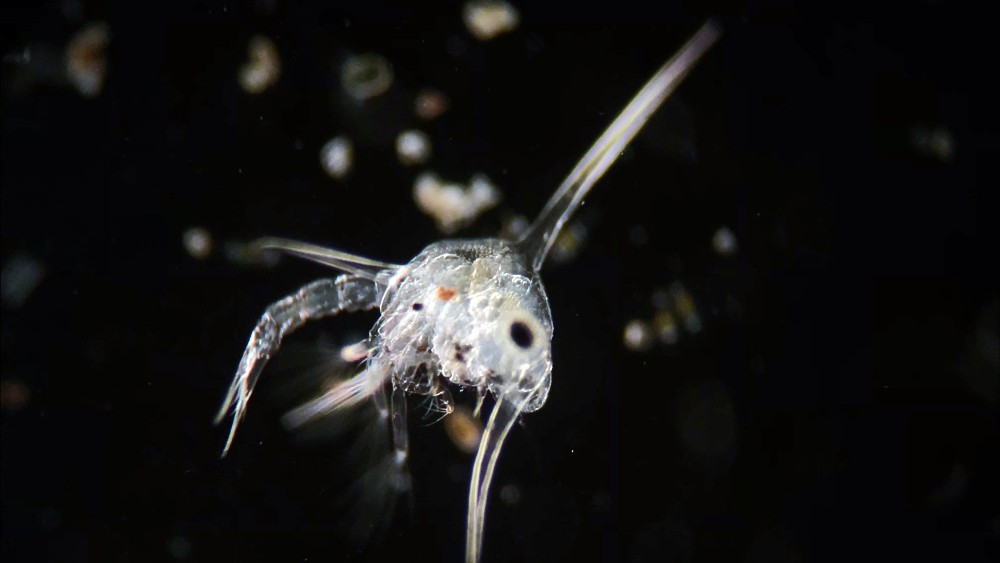
Plankton are defined as organisms that cannot freely swim against a current and includes both phytoplankton (primary producers) and zooplankton (animal plankton). Zooplankton often include larval fish, crustaceans, and gastropods, as well adult forms of many sea jellies. They range in size from “microplankton,” which are microscopic in size, to “megaplankton,” which are up to 8 inches wide. This group of animals is incredibly important because they serve as the first link between primary producers such as algae, and all other consumers and trophic levels within marine food webs.
Rachel Roday is a communications intern with NOAA’s Office of National Marine Sanctuaries
Rachel Plunkett is the content manager and senior writer at NOAA’s Office of National Marine Sanctuaries

